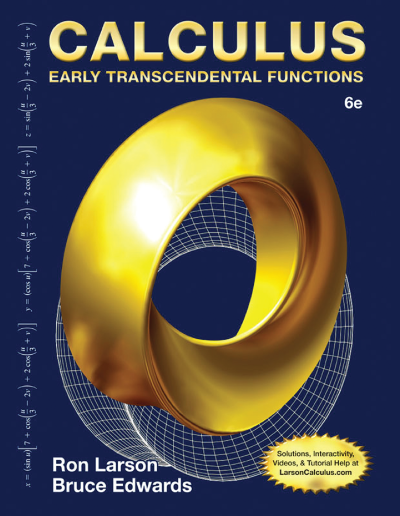Maria Agnesi
(1718 – 1799)
Maria Gaetana Agnesi, the Western world’s first woman mathematician and one of the most remarkable scholars of either sex in all history, was born in Milan, Italy on May 16, 1718. She was fortunate to have been born during the Renaissance, when Italian women, unlike their counterparts in France and Germany, were recognized as the intellectual equals of men and were enthusiastically welcomed by the universities.
Maria’s father, Pietro Agnesi, a professor of mathematics at the University of Bologna, and her mother, Anna Fortunato Brivio, were quick to recognize their eldest daughter’s genius. They carefully planned her course of study and engaged distinguished professors as her tutors. By the age of five, Maria was fluent in French; by the age of nine, she had mastered several modern languages in addition to Hebrew, Latin, and Greek. Once Maria had attained the requisite competence as a linguist, she was invited to participate in her father’s “academic evenings.” On these occasions, prominent intellectuals from all of Europe gathered at the Agnesi home to discuss current thought in science and philosophy. Nine-year-old Maria’s debut was a discourse, presented in Latin, on the subject, “The study of the liberal arts by women is by no means to be rejected.” Maria then successfully defended her thesis, defeating each objection in the native tongue of the rebutter.
Over the next decade, Agnesi addressed problems in disciplines ranging from celestial mechanics, hydromechanics, elasticity, and logic to botany, zoology, and mineralogy. Many of her discourses were published in her Propositiones philosophicae, which appeared in 1738.
In 1732, when Maria was thirteen years old, her mother died. Maria cared for the seven younger children born of Pietro Agnesi’s marriage to Anna Brivio, and later, the thirteen from her father’s two subsequent marriages. What time she could spare, Maria devoted to the study of mathematics. She was particularly fascinated by the mathematical discoveries of Newton, Euler, Descartes, and Leibniz.
Despite the ease with which she was able to grasp and communicate ideas, the academic evenings were an ordeal for the shy, self-effacing Maria. At the age of twenty she sought her father’s approval of her yearning to withdraw from society and enter a convent. He refused to allow her to become a nun, but respected her desire to dress modestly, to go to church as often as she wished, and to eschew worldly pleasures. He also relieved her of the obligation to appear at his academic evenings.
Agnesi, who never married, was thus free to devote herself to the work for which she is best known, the Istituzioni analitiche ad uso della gioventù italiana. An ambitious two-volume treatise of algebra and analysis, Agnesi’s Istituzioni analitiche systematized and frequently expanded the work of every major mathematician to that time. The clarity and precision with which she presented even the most difficult concepts gave the work great value as a textbook, and won her acclaim throughout Europe. The Empress Maria Theresa of Austria, to whom Agnesi dedicated the Istituzioni analitiche, awarded Maria a diamond ring and a crystal box set with diamonds in recognition of Agnesi’s competence as a mathematician. Pope Benedict XIV presented her with a gold medal and a gold wreath studded with precious stones; he also named her an honorary professor at the University of Bologna, though she apparently chose not to teach.
The Istituzioni analitiche was translated from Italian to English by John Colson, Lucasian professor of mathematics at Cambridge, and was published in 1801 as Analytical Institutions. In rendering Maria’s discussion of a sine curve with the Cartesian equation xy2 = a2(a 0 x), Colson confused the Italian word versiera, from the Latin vertere, “to turn,” with an abbreviation of avversiera, the Italian word for “wife of the devil.” The resulting mistranslation, “Witch of Agnesi,” has unfortunately become the phrase with which Maria is most often associated in English texts.
Following the death of her father in 1752, Agnesi abandoned mathematics and turned to the study of theology. She sold her gifts from the Empress and the Pope to raise funds for a home in which she cared for the sick and indigent of Milan. Though she lived among the poor, she did not neglect her family, but continued to direct the education of her many younger brothers and sisters.
In 1783, at the request of Italy’s Cardinal Pozzobonelli, Agnesi accepted a position as director of the Pio Albergo Trivulzio, a home for the aged. Though she eventually lost her sight and hearing, she remained active in her efforts on behalf of the poor until her death on January 9, 1799, at eighty years of age. She was buried among the indigent in a common grave.
Links
http://www-history.mcs.st-andrews.ac.uk/Biographies/Agnesi.html
http://www.agnesscott.edu/lriddle/women/agnesi.htm
References
- Gillispie, Charles Coulston, ed. Dictionary of Scientific Biography. Vol. I. New York: Charles Scribner’s Sons, 1970.
- Grinstein, Louise S. and Paul J. Campbell, ed. Women of Mathematics: A Biobibliographic Sourcebook. New York: Greenwood Press, 1987.
- Osen, Lynn M. Women in Mathematics. Cambridge, Massachusetts: The MIT Press, 1974











